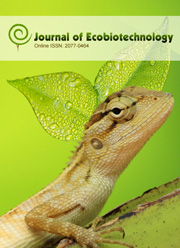Determination of Appropriate Maize Haricot Bean Arrangement in Moisture Stress Areas of Borana, Southern Ethiopia
DOI:
https://doi.org/10.25081/jebt.2017.v9.3447Abstract
Maize haricot bean intercropping is one of the commonly practiced agronomic practice in Ethiopia. Intercropping is the production of two or more crops simultaneously in both space and time. Field studies were conducted at Yabello Pastoral and Dryland Agriculture research center on site in 2011 and 2012 cropping season to identify the optimum haricot bean arrangement in maize rows for moisture stress areas of Borana and to review the advantage of intercropping over sole cropping. The results revealed significant differences among different maize-haricot bean arrangements. The highest grain yield was obtained from two rows of haricot bean planting between maize rows which yields 5.53tone/ha and 5.88tone/ha in 2011 and 2012 main cropping seasons respectively. The highest total land equivalent ratio (1.36), land equivalent coefficient (0.46) and monetary advantage index (10964.74) was recorded for two rows of haricot bean between planted between two rows of maize. The outcomes of the two years’ experiment showed 1M: 2HB combination was optimum population and economical combination relative to other combinations. Therefore, two rows of haricot bean planting between two rows of maize intercropped is recommended for the study area for their best compatibility and economic benefit as compared to other population densities considered in the following investigation.



 .
.